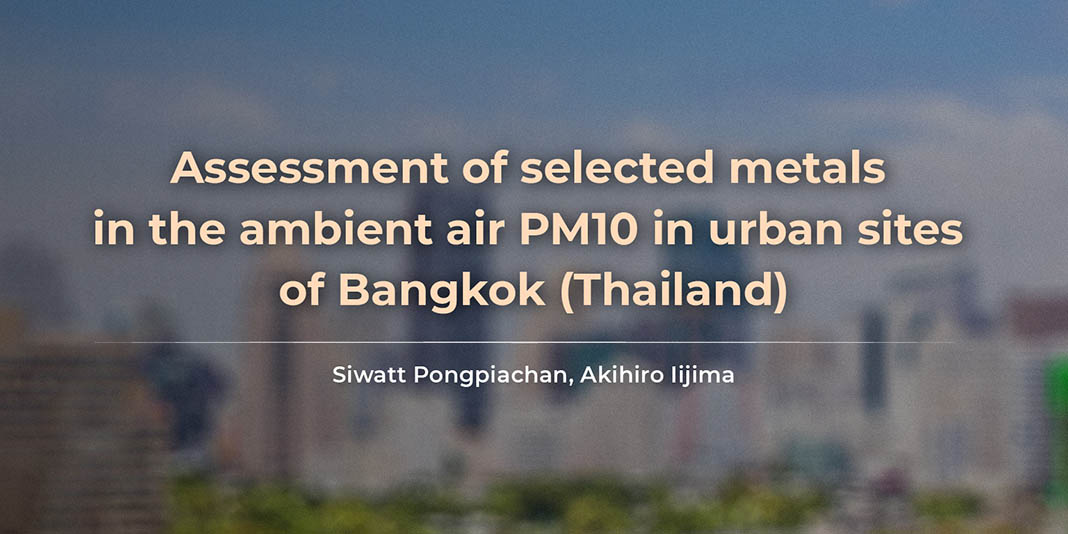Assessment of selected metals in the ambient air PM10 in urban sites of Bangkok (Thailand)
- Details
- SDGS - Research

Assessment of selected metals in the ambient air PM10 in urban sites of Bangkok (Thailand)
Professor Dr. Siwatt Pongpiachan (School of Social and Environmental Development, National Institute of Development Administration), Akihiro Iijima
Abstract
Estimating the atmospheric concentrations of PM10-bounded selected metals in urban air is crucial for evaluating adverse health impacts. In the current study, a combination of measurements and multivariate statistical tools was used to investigate the influence of anthropogenic activities on variations in the contents of 18 metals (i.e., Al, Sc, V, Cr, Mn, Fe, Co, Ni, Cu, Zn, As, Se, Cd, Sb, Ba, La, Ce and Pb) in ambient air. The concentrations ofPM10-bounded metals were measured simultaneously at eight air quality observatory sites during a half-year period at heavily trafficked roads and in urban residential zones in Bangkok, Thailand.
Although the daily average concentrations of Al, V, Cr, Mn and Fe were almost equivalent to those of other urban cities around the world, the contents of the majority of the selected metals were much lower than the existing ambient air quality guidelines and standard limit values. The sequence of average values of selected metals followed the order of Al>Fe>Zn>Cu>Pb>Mn>Ba>V>Sb>Ni>As>Cr>Cd>Se>Ce>La>Co>Sc. The probability distribution function (PDF) plots showed sharp symmetrical bell-shaped curves in Vand Cr, indicating that crustal emissions are the predominant sources of these two elements in PM10. The comparatively low coefficients of divergence (COD) that were found in the majority of samples highlight that site-specific effects are of minor importance. A principal component analysis (PCA) revealed that 37.74, 13.51 and 11.32 % of the total variances represent crustal emissions, vehicular exhausts and the wear and tear of brakes and tires, respectively.
อ่านเพิ่มเติมได้ที่ : Assessment of selected metals in the ambient air PM10 in urban sites of Bangkok (Thailand)